CLS, Sciaena and ANP|WWF Portugal, side by side to monitor Portuguese artisanal fishing in the frame of the European Fish-X project
- 1 February 2024
- Category: News
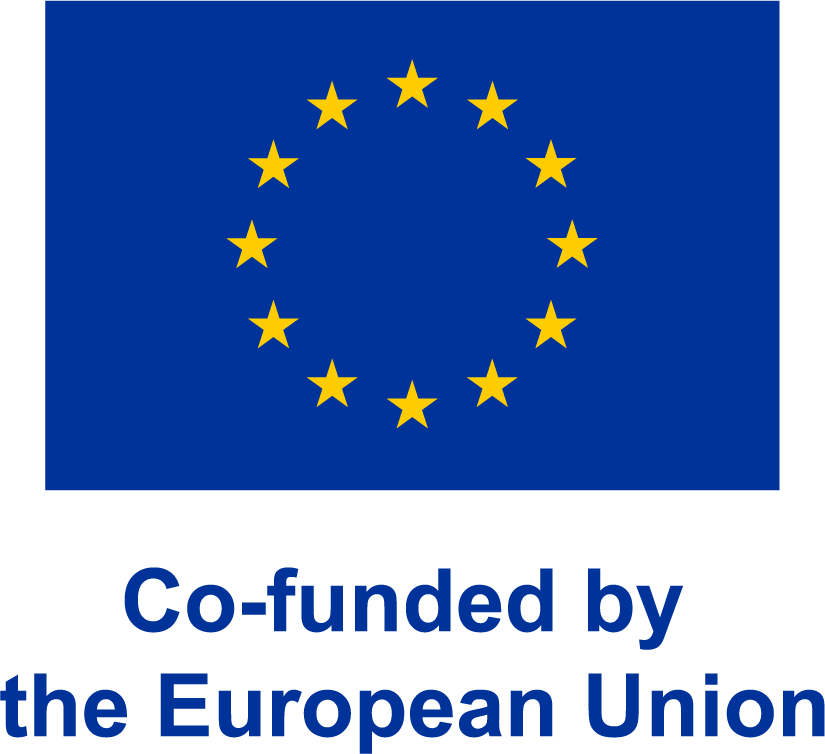 The Fish-X Project is a 3-year project and is co-funded by the Horizon Europe Programme.
The Fish-X Project is a 3-year project and is co-funded by the Horizon Europe Programme.
The project will develop a Fisheries Dataspace (Fish-X), an Insight Platform, and a Traceability Application to support the objectives of Common Fisheries Policy (CFP), EU Green Deal, and Farm to Fork Strategy.
What is Fish-X project purpose?
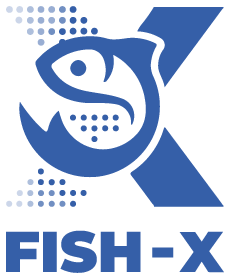 Its goal is to improve the sustainability of EU fisheries and better protect marine ecosystems. Modernising Small Scale Fisheries (SSF) is crucial as they represent a large portion of employment in the fisheries sector (80 to 90%), responsible for about half of fish captures, and they are challenged by the evolution of fish stocks and competition with other coastal activities.
Its goal is to improve the sustainability of EU fisheries and better protect marine ecosystems. Modernising Small Scale Fisheries (SSF) is crucial as they represent a large portion of employment in the fisheries sector (80 to 90%), responsible for about half of fish captures, and they are challenged by the evolution of fish stocks and competition with other coastal activities.
The Fish-X Project is being implemented by seven European organizations, called consortium partners, including TransMarTech Schleswig-Holstein (TMT, Germany), EU Tech Chamber (EUTECH, Germany), Collecte Localisation Satellites (CLS, France), North.io (Germany), Sciaena (Portugal), OURZ (Germany) and WWF (Belgium). Each agency has specific responsibilities related to the Fish-X Project and they will continue to work jointly throughout the tenure of the project to achieve common goals.
Learn more about the Fish-X European project
Sciaena, ANP|WWF Portugal and CLS, partners to foster sustainable fisheries and marine biodiversity in Portuguese waters
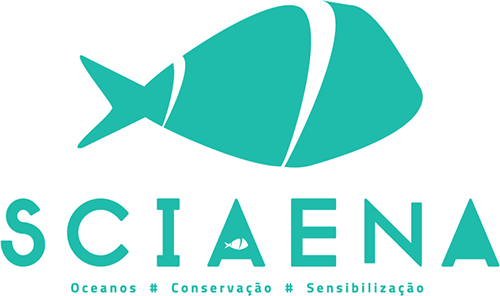 In this frame, CLS, ANP|WWF Portugal and Sciaena are working closely together to deploy the CLS VMS transponder NEMO in Portugal and to train fishers to use the FishWeb platform. This will contribute to fisheries monitoring and help fishers identify important fishing grounds, an important information to include in marine spatial planning strategies.
In this frame, CLS, ANP|WWF Portugal and Sciaena are working closely together to deploy the CLS VMS transponder NEMO in Portugal and to train fishers to use the FishWeb platform. This will contribute to fisheries monitoring and help fishers identify important fishing grounds, an important information to include in marine spatial planning strategies.
We had the opportunity to ask a few questions to Raquel Pereira, Fisheries and Marine Conservation Technician and Nicolas Blanc, Fisheries and Biodiversity Coordinator at Sciaena.
Learn more about NEMO Vessel Monitoring System
Raquel, could you present Sciaena?
Sciaena is a Portuguese environmental Non-Governmental Organization that since 2006 works for a healthy marine environment and an informed population involved in its conservation, through communication, education and political intervention projects. The team has members with different backgrounds, from biologists to designers and works on crucial matters for ocean conservation such as fisheries, marine protected areas, plastics, renewable energies, deep-sea mining and environmental awareness.
And could you tell us more about ANP|WWF?
 ANP|WWF is a non-governmental organization that has a partnership agreement with WWF and has given continuity to WWF’s 20 yrs-long work in Portugal (through its Mediterranean Program), and has welcomed its project portfolio and experienced staff. We work on Oceans and Fisheries, Freshwater, Food, Forests and Wildlife, and these areas of work are supported by an Environmental Education team and a Policy team. Our work on oceans was initially focused on promoting fisheries co-management to bring about a paradigm shift in fisheries management. It has since progressed to include responsible seafood consumption, marine conservation, policy and ocean literacy.
ANP|WWF is a non-governmental organization that has a partnership agreement with WWF and has given continuity to WWF’s 20 yrs-long work in Portugal (through its Mediterranean Program), and has welcomed its project portfolio and experienced staff. We work on Oceans and Fisheries, Freshwater, Food, Forests and Wildlife, and these areas of work are supported by an Environmental Education team and a Policy team. Our work on oceans was initially focused on promoting fisheries co-management to bring about a paradigm shift in fisheries management. It has since progressed to include responsible seafood consumption, marine conservation, policy and ocean literacy.
Why are Sciaena and ANP|WWF in the Fish-X project? What are their goals?
Sciaena is in the Fish-X project to implement one of the use cases and to give valuable inputs regarding environmental and social aspects of the fishing sector, due to its knowledge and relationship with Portuguese fishing communities and also its geographical location. Fish-X is based on case studies with small-scale fisheries in three areas of the EU waters (Atlantic, Adriatic and North Sea). Sciaena main responsibilities is related to the use case taking place in the Atlantic, in collaboration with ANP|WWF Portugal and CLS. The collaboration with small-scale fishers is paramount to achieve the goals of the project, contributing to help this crucial part of the fishing sector and giving them the voice to give valuable inputs on how digitalization should be implemented and adapted to regional realities.
ANP|WWF has extensive experience working with fisheries, and long-established relationships with local fishers in the Algarve region. In collaboration with Sciaena, ANP|WWF is working on the Portuguese case study by engaging fishers to install the NEMOs and empower them to use the FishWeb platform.
How is the artisanal fisheries market in Portugal?
The Portuguese fishing fleet is mainly small-scale, with more than 80% of the vessels having less than 12 meters in length, and for this reason the artisanal fisheries do have a big importance in the Portuguese fish market. It offers a wide variety of fish species (over 200 different types of species are landed) and high quality and valuable products. All the fish that is landed needs to go to the fish auction and only registered entities can buy the fish, so, aside from a couple of particular cases, there are no legal direct sales of seafood. In recent years some interesting initiatives started in some fishing ports, with proactive fishing communities creating “fish baskets”, being a great way for the end-consumers to know the quality and origin of the fish bought. It also increases the profit of the fishers, which usually are not the ones taking advantage of the increase of prices along the value chain.
How Portuguese authorities monitor fishing activities in Portugal today?
Fishing activities in Portugal are monitored in several different ways, in accordance with EU guidelines and vary among types of fisheries and sizes of fishing vessels. Vessels with more than 12 meters in length need to be equipped with AIS (Automatic Identification System), which allows authorities to monitor their movements. Smaller vessels do not have this equipment and thus are only monitored when there are at-sea monitoring activities by authorities. Some fisheries, like the tuna fishery in the Azores, need to have an observer onboard who is in charge with monitoring catches, which is a great way to have detailed data about fishing operations, though obviously costly.
How started the cooperation with CLS?
![]() The cooperation with CLS started with the Fish-X project since our entities are part of the project consortium. The data from the project that will be used in the insight platform are mainly from the VMS (Vessel Monitoring System) device developed by CLS, called NEMO, which is being installed in fishing boats whose owners are voluntarily participating in the use case. For this reason, Sciaena and ANP | WWF are working on the ground with the guidance and technical knowledge of the equipment from the CLS team. This allows the proper installation of the devices and close contact with the Portuguese fishers, to give them the needed support to use the FishWeb platform (where they can access their own data) and take advantage of the device.
The cooperation with CLS started with the Fish-X project since our entities are part of the project consortium. The data from the project that will be used in the insight platform are mainly from the VMS (Vessel Monitoring System) device developed by CLS, called NEMO, which is being installed in fishing boats whose owners are voluntarily participating in the use case. For this reason, Sciaena and ANP | WWF are working on the ground with the guidance and technical knowledge of the equipment from the CLS team. This allows the proper installation of the devices and close contact with the Portuguese fishers, to give them the needed support to use the FishWeb platform (where they can access their own data) and take advantage of the device.
What are the key benefits from using the NEMO for the Portuguese fishermen?
One of the key benefits is that they are better able to protect their fishing grounds from other types of usage of maritime space, since they can record the areas they use for their fishing activities. It also enables them to better understand their own activity and have a backlog of the areas they use, which means they don’t need to always be saving their GPS information. The fact that they can access their own data is also pointed out as a good advantage for them.
How is the deployment and installation of NEMOs going so far?
So far the deployment and installation is going well. The Portuguese fishing communities from the south of Portugal, where the use case is being done, are quite open to partnerships such as these, in part due to their experience with past projects from different entities (either research centers or national institutes) that work in the Algarve and depend on the cooperation of fishers. This and our close contact with some of them contribute to this needed trust and so far we have 19 devices deployed. The target number is at least 40 and we are confident that we will reach it.
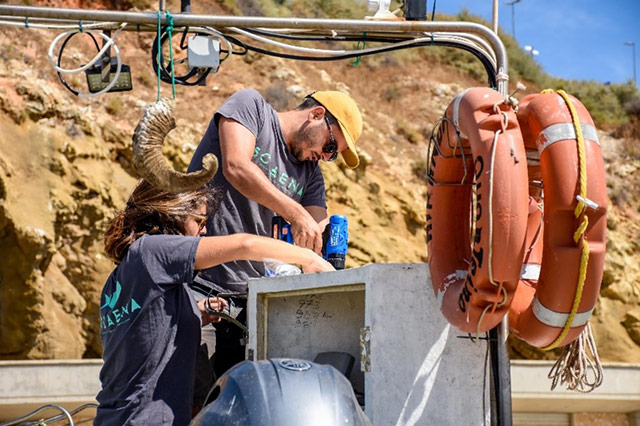
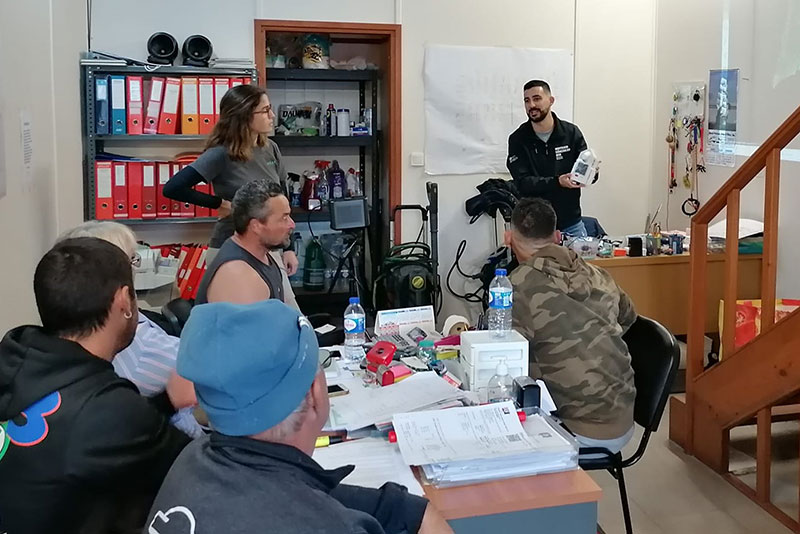
What are the next steps?
Since we haven’t reached our target number yet, the next steps are to keep contacting more fishing associations and managing to schedule the installation of the new ones that already showed interest in the project, being that the result of some communication activities that we have been doing. Aside of that, it is also needed to keep close contact on the ground to continue giving them support about the device and platforms, and also collecting other types of data, such as their catches, to combine with the geolocation data. It is an ongoing process, so hopefully soon there will be good news about it.
